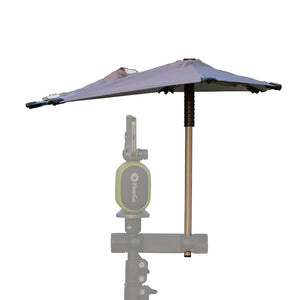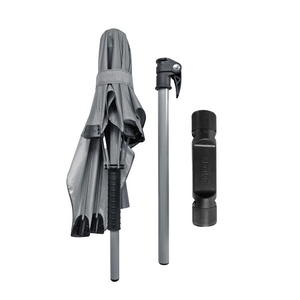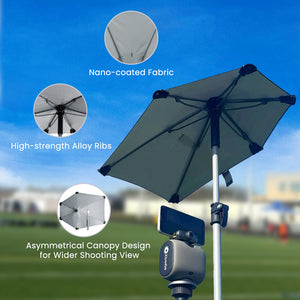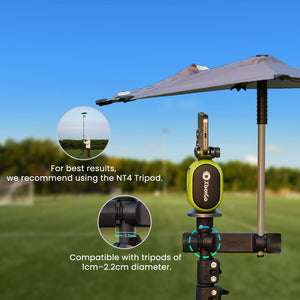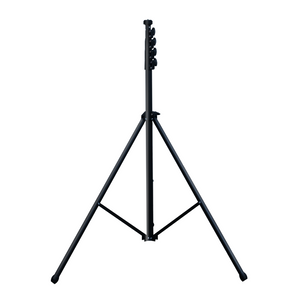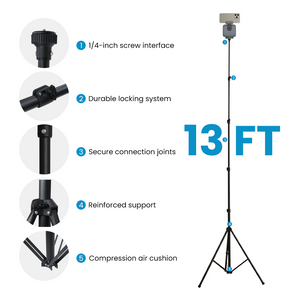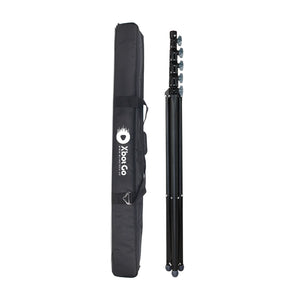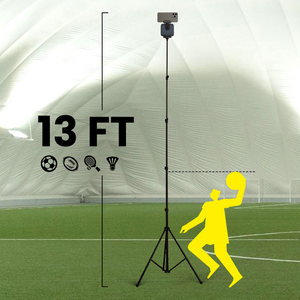XbotGo Chameleon AI Sports Camera
Top 10 Hockey Leagues: From NHL to European Elite
Hockey's global landscape is rapidly evolving. With geopolitical shifts reshaping league power and new markets emerging, understanding where elite hockey is played requires fresh insight. This comprehensive guide ranks the world's top leagues, from the NHL's dominance to Europe's rising powers, helping scouts, players, and fans navigate hockey's complex ecosystem in 2025.
The Undisputed Champion: National Hockey League (NHL)
When it comes to the pinnacle of professional hockey, there's no debate. The NHL reigns supreme with its unmatched combination of elite talent, financial muscle, and global reach. With an average player salary of $3.3 million USD, the league attracts the world's best players across 32 teams spanning North America.
What sets the NHL apart isn't just money—it's the depth of competition. Even fourth-line players possess skills that would make them stars in other leagues. The speed is relentless, the physicality demands excellence under pressure, and the tactical sophistication continues evolving each season. From Connor McDavid's otherworldly creativity to Auston Matthews' lethal shooting, the NHL showcases hockey at its absolute peak.
The league's 82-game regular season, followed by the grueling Stanley Cup playoffs, creates a proving ground unlike any other. It's why players from Sweden to Slovakia dream of hoisting Lord Stanley's Cup—because in hockey, there's simply no greater achievement.
The European Powerhouses
Kontinental Hockey League (KHL) - The Fallen Giant
Once the clear second-best league globally, the KHL's story has dramatically shifted since 2022. The exodus of Western European players following geopolitical tensions has created a two-tier reality: Moscow and St. Petersburg teams still compete at elite levels, while bottom-tier clubs struggle at ECHL standards.
Despite these challenges, the KHL remains formidable. Playing on international-sized rinks (100 feet wide versus the NHL's 85), the league emphasizes creativity and puck possession. Top KHL stars would slot comfortably onto NHL second or third lines, though the overall depth can't match North America's premier league. With salaries averaging $1.16 million USD, it still attracts considerable talent, particularly from Russia and neighboring nations.
Swedish Hockey League (SHL) - The Development Factory
If the NHL is hockey's Broadway, the SHL is its finest acting school. This 14-team league has arguably surpassed the KHL as Europe's premier competition, combining technical excellence with tactical sophistication. Average salaries hover around $399,000 USD, but the real currency here is opportunity.
The SHL's reputation for developing complete players is unmatched. Names like Erik Karlsson, Victor Hedman, and Henrik Lundqvist all honed their craft here before conquering the NHL. The league's emphasis on skill development, structured play, and professional preparation makes it a preferred destination for prospects and veterans alike. Swedish hockey culture, with its focus on both individual skill and team tactics, creates players who transition seamlessly to any system worldwide.
National League (Switzerland) - The Surprise Contender
Switzerland's top league has quietly emerged as a major player, offering competitive salaries ($420,000 USD average) and an exceptional quality of life. The fast-paced, offensive style attracts experienced internationals seeking both competitive hockey and Alpine living. While the league's depth doesn't match the SHL, top Swiss teams can compete with anyone in Europe.
The league's financial stability and modern facilities make it particularly attractive for players in their late twenties and thirties who might not crack NHL rosters but still have elite skills to offer. It's become a preferred destination for former NHLers looking to extend their careers in a professional environment.
Liiga (Finland) - The Technical Masters
Finland's Liiga represents hockey intelligence personified. Despite lower average salaries ($145,000 USD), the league consistently produces players who excel at the highest levels. The Finnish approach emphasizes positional play, defensive responsibility, and tactical understanding—qualities that translate perfectly to NHL success.
What Liiga lacks in financial resources, it compensates with player development expertise. The league serves as a crucial stepping stone for young Finns before they make the jump to larger European leagues or North America. Recent NHL stars like Aleksander Barkov and Mikko Rantanen exemplify the technical excellence that defines Finnish hockey.
The Development Pipeline
American Hockey League (AHL) - The NHL's Proving Ground
The AHL occupies a unique position as the NHL's official development league. With 32 teams directly affiliated with NHL clubs, it's where prospects refine their games and veterans fight for another chance at the big time. The quality varies dramatically—top AHL players are essentially NHL-caliber talents waiting for opportunity, while others are career minor leaguers.
What makes the AHL essential is its role in acclimatizing international players to North American hockey. The smaller rinks, more physical play, and grueling travel schedule mirror NHL demands. It's estimated that 88% of current NHL players spent time in the AHL, making it an indispensable part of hockey's ecosystem.
Canadian Hockey League (CHL) - The Junior Juggernaut
The CHL isn't one league but three—the Ontario Hockey League (OHL), Western Hockey League (WHL), and Quebec Major Junior Hockey League (QMJHL). Together, they form the world's premier junior hockey system for players aged 16-20. These aren't professional leagues in the traditional sense, but their importance to hockey development cannot be overstated.
Playing 68-game schedules that can extend to 100+ games with playoffs, CHL players experience a professional lifestyle while still teenagers. The competition is fierce, with NHL scouts treating CHL games as essential viewing. Recent changes now allow CHL graduates to play NCAA hockey starting in 2025-26, potentially reshaping North American player development.
NCAA Hockey - The Academic Alternative
American college hockey offers a unique path combining elite competition with education. The NCAA's stricter age limits and academic requirements create a different development timeline, but the results speak for themselves. Players like Cale Makar and Jack Eichel prove that the college route can produce superstars.
The NCAA's appeal extends beyond the ice. Players receive world-class education while developing their games, providing security beyond hockey. With recent NIL (Name, Image, Likeness) rules allowing players to earn money, college hockey's attractiveness continues growing.
The Regional Excellence Tier
Czech Extraliga
The Czech Republic's top league balances tradition with modern development. While not matching the financial power of Western European leagues, Czech hockey's technical proficiency and tactical discipline remain world-class. The league serves as both a development ground for young Czechs and a competitive home for veterans.
Deutsche Eishockey Liga (DEL) - Germany
German hockey has surged following international successes, with the DEL attracting increasing attention. Average salaries around $290,000 USD and growing fan support make it an appealing destination. The league's physicality combined with improving skill levels creates an entertaining product that's steadily climbing European rankings.
Other Notable Leagues
From Slovakia's Tipos Extraliga to Austria's ICE Hockey League, Europe's hockey landscape offers numerous professional opportunities. While these leagues might not match the top tier in overall quality, they provide crucial development paths and career opportunities for hundreds of players annually.
The Women's Game Revolution
Professional Women's Hockey League (PWHL)
Women's hockey has found its flagship with the PWHL. Launched in 2023, the league immediately set attendance records and established new standards for women's professional sports. With six founding franchises and expansion already underway, the PWHL represents hockey's most exciting growth story.
The league's success stems from finally providing female players with legitimate professional opportunities. Top PWHL players possess skills that would translate to men's leagues several tiers below the NHL, yet historically lacked comparable platforms. That's changing rapidly.
The Technology Factor in Modern Hockey
Modern hockey leagues at every level are embracing technological advancement to enhance player development and fan experience. In an era where even junior teams analyze performance metrics and lower-tier professional clubs seek competitive edges, the democratization of technology is reshaping how teams operate. AI-powered camera systems now deliver capabilities once exclusive to major broadcasters, allowing coaches from youth leagues to European professionals to capture game footage, analyze player movements, and share highlights instantly. This technological evolution means that whether you're watching future NHL stars in the CHL or following your local European club, the tools for growth and engagement have never been more accessible.
What Makes a League "The Best"?
Defining the "best" league depends on your criteria. Pure skill? The NHL wins decisively. Development quality? The SHL and CHL excel. Financial opportunity relative to lifestyle? Switzerland's National League competes strongly. Entertainment value? The KHL's creative style and the PWHL's competitive passion offer unique thrills.
Each league serves distinct purposes within hockey's global ecosystem. The NHL represents the ultimate destination, but the journey there—or the alternative careers forged elsewhere—relies on this interconnected network of competitions worldwide.
Looking Forward: Hockey's Evolving Landscape
The hockey landscape continues evolving—from the KHL's transformation to the PWHL's emergence and changing junior eligibility rules. While leagues may be ranked differently, each serves vital roles in hockey's global ecosystem. The NHL remains the ultimate destination, but diverse pathways through European leagues, junior systems, and emerging markets ensure the sport's continued growth.
For players, opportunities have never been more varied. For fans, world-class hockey is always accessible somewhere globally. As technology democratizes development and geopolitical changes reshape competitions, one truth endures: the best hockey exists wherever passion meets excellence on the ice.
XbotGo Chameleon AI Sports Camera
Capture every moment with AI-powered tracking. Perfect for coaches, parents, and athletes who want seamless footage without manual filming.







 Soccer
Soccer Basketball
Basketball Ice Hockey
Ice Hockey Rugby
Rugby










